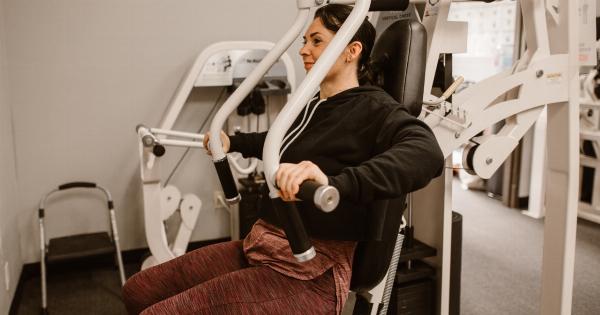When it comes to fitness, women have a distinct advantage over men. Biological factors combine to give women a head start in areas like endurance, flexibility, and recovery time.
Let’s take a closer look at some of the ways women have the upper hand when it comes to fitness.
1. Body Fat
Women tend to carry more body fat than men, which has both advantages and disadvantages. On the positive side, body fat provides a source of energy and helps to insulate the body.
It also gives women a natural cushioning effect when performing exercises like running or jumping. However, excess body fat can also be a hindrance, as it increases the load on the body during exercise and can make certain activities more difficult.
2. Endurance
When it comes to endurance, women are at an advantage due to a higher percentage of slow-twitch muscle fibers. These fibers help to provide sustained energy during activities like distance running or cycling.
Women also tend to have a higher tolerance for lactic acid buildup, which allows them to perform at a high level for longer periods of time. This is why you often see women excel in endurance sports like marathon running and triathlon.
3. Flexibility
Flexibility is another area where women have the upper hand. Women generally have more joint mobility and range of motion, which allows them to perform exercises and movements with greater ease.
This can also help to prevent injury, as tight muscles and joints can lead to strains and sprains. Women also tend to be more flexible in the hips and pelvis, which can be beneficial during childbirth and recovery.
4. Recovery Time
Following exercise or physical activity, women tend to recover faster than men. This is due in part to hormones like estrogen, which can help to reduce inflammation and aid in the repair and regeneration of muscle tissue.
Women also tend to have a higher pain threshold, which allows them to push through discomfort and recover more quickly.
5. Mental Toughness
While mental toughness is not a biological factor, it is worth noting that women often possess a higher level of mental resilience than men.
Research has shown that women tend to cope better with stress and adversity, and are more likely to seek out social support when facing challenges. This can be a key factor in achieving fitness goals, as it requires consistent effort and dedication over time.
6. Balance
Balance is another area where women have a distinct advantage. Women generally have a lower center of gravity, which makes it easier to maintain balance during movements and activities.
Women also tend to have a stronger pelvic floor, which can help to prevent incontinence and other pelvic floor conditions.
7. Functional Fitness
Functional fitness refers to the ability to perform everyday tasks with ease and without pain or injury. Women are often better suited to functional fitness activities, as they tend to have better joint mobility, core strength, and balance.
This can translate into a better quality of life, as women are able to perform tasks like carrying groceries, lifting children, and climbing stairs without difficulty.
8. Metabolism
Finally, women have a different metabolism than men, which can have implications for fitness and weight loss. Women typically have a lower metabolic rate than men, meaning they burn fewer calories at rest.
However, women also tend to burn more fat during exercise, which can be beneficial for weight loss. The menstrual cycle can also have an impact on metabolism and energy levels, with the follicular phase (days 1-14) being associated with increased energy and the luteal phase (days 15-28) being associated with decreased energy.
Conclusion
While men and women are both capable of achieving a high level of fitness, women have a distinct biological edge in areas like endurance, flexibility, and recovery time.
By understanding these advantages, women can tailor their fitness routine to maximize their potential and achieve their goals.































